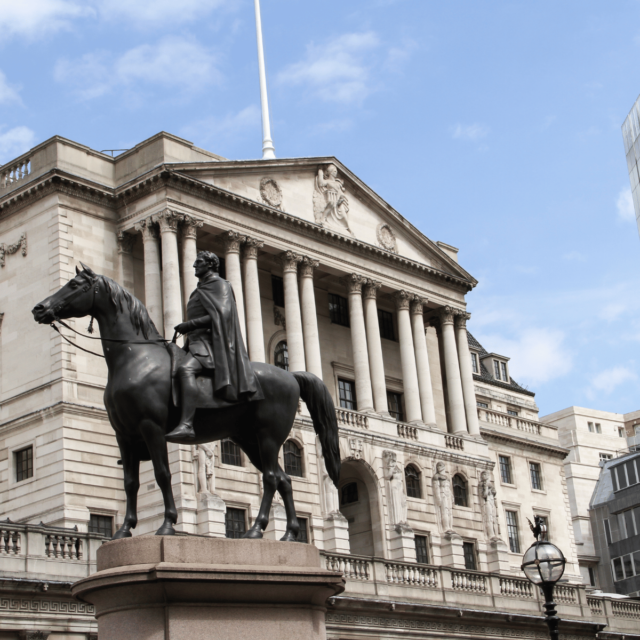Friday Flyer: The Deficit Regime and the Role of Monetary Policy
Separating monetary from fiscal policy is no simple matter. Both are primarily designed to help smooth economic fluctuations. Budget deficits limit the depths of recessions as do low interest rates.
Separating monetary from fiscal policy is no simple matter. Both are primarily designed to help smooth economic fluctuations. Budget deficits limit the depths of recessions as do low interest rates. Recessions go hand in glove with low rates and budget deficits and booms with high interest rates and surpluses. The classic questions facing economists has thus not been whether they move together but more whether they work effectively jointly, cancel each other out or might better be assigned to different objectives. For example, might monetary policy be best assigned to price stability and fiscal policy, in all its forms, to a growth objective?
Whether monetary policy makers like to admit it or not there are first order spillovers to fiscal policy from the machinations of monetary policy. Lower policy interest rates effect the costs of government borrowing making a given expenditure path cheaper to fund. It might also have the less benign result of providing an incentive for the government to issue more debt than would otherwise be the case. Figure 1 shows the path of fiscal deficits in the post war period and we can note a profound deterioration in the deficits in the era of low interest rates. Secondly, the stabilisation of nominal income, which we should think of ultimately as the tax base, by monetary policy will also tend to make a given level of debt more affordable.
The fiscal authority’s plans for reaching a given public debt to income ratio are thus conditioned on the expected set of monetary policies. Analogously, monetary policy conditions on a given path of demand, part of which is determined by fiscal policy. In fact we might trace out the plans for each of the central bank and the government conditioned on the response of the other. One rather attractive equilibrium is where neither would do any different given the choice of the other: a Nash equilibrium. None of this argument is especially new. But since the financial crisis we have a new form of interaction. A large fraction of public debt, which is basically the stock of all previous budget deficits, has been bought by central banks. Central banks thus are not only influencing the costs of government funding but also regulating the quantity that can be held by the private sector. By holding the market short, they can ensure that the price at which that debt is held is higher than it would otherwise be and its rate of return correspondingly lower.
The rationale for such policies is reasonably clear. The size of the shocks hitting the economy after the global financial crisis were so large that if it were possible policy rates, which are essentially short term interest rates, would ideally have been set at substantively and persistently negative levels. But because policy rates have to settle near zero otherwise people will simply hold cash, there was a gap between where rates were and where they ideally might have been. So the response was to try and influence interest rates further along the maturity spectrum by buying government bonds. These purchases would tend to raise the price of those bonds and so imply a lower long term interest rate. The consolidated balance sheet of the central bank and the government is thus what matters. The government has bonds backed by future tax receipts and some of those bonds are held by the central bank, which are financed by the issuance of reserves. So the government chooses the quantity of debt and the central bank determines how much is swapped for reserves, which because they pay interest are a form of short term debt.
The central bank buys bonds as assets by issuing its own reserves, or central bank liabilities. At the Bank of England a separate entity called the Asset Purchase Facility (APF) borrowed those reserves and paid interest at Bank Rate. Let us suppose that the bonds it bought gave a coupon of some 3%, which meant that the APF might clear a flow profit, for example, of 3-0.5%=2.5% per year on the bonds it buys. Because 3% is the average interest rate over the life of the bond, the profits in the short run when the bond rate is above Bank Rate will be matched by losses in future years when Bank Rate is above the bond rate. We might thus expect the expected profits of this trade to be zero but one which brings forward cash flows in the short run. Since November 2012, these profits have been remitted to the Treasury and have `artificially’ reduced the reported budget deficit.
So when policy rates were cut in August to 0.25% there was a further bonus to the Treasury. The profit rate went up! In the November Review (see Figure 2) we calculated that this bonus is worth some £4bn per year for the rest of this Parliament as a result of lower funding costs and the remittances from the APF. And so thanks to Threadneedle Street, fiscal policy currently looks more sustainable than it might be because the market does not need to hold all the debt that has been issued since 2003 and the costs of funding are at an historic low. Does the low level of funding mean we have the fiscal space to issue more debt? Or that the true deterioration in the fiscal position is being masked by accommodative monetary policy? I cannot answer these questions in a short blog. But one thing only seems clear: we will continue to run budget deficits for some time to come and so public debt will rise. Perhaps the Government ought to run an affordability check for its debt under higher interest rates?



















